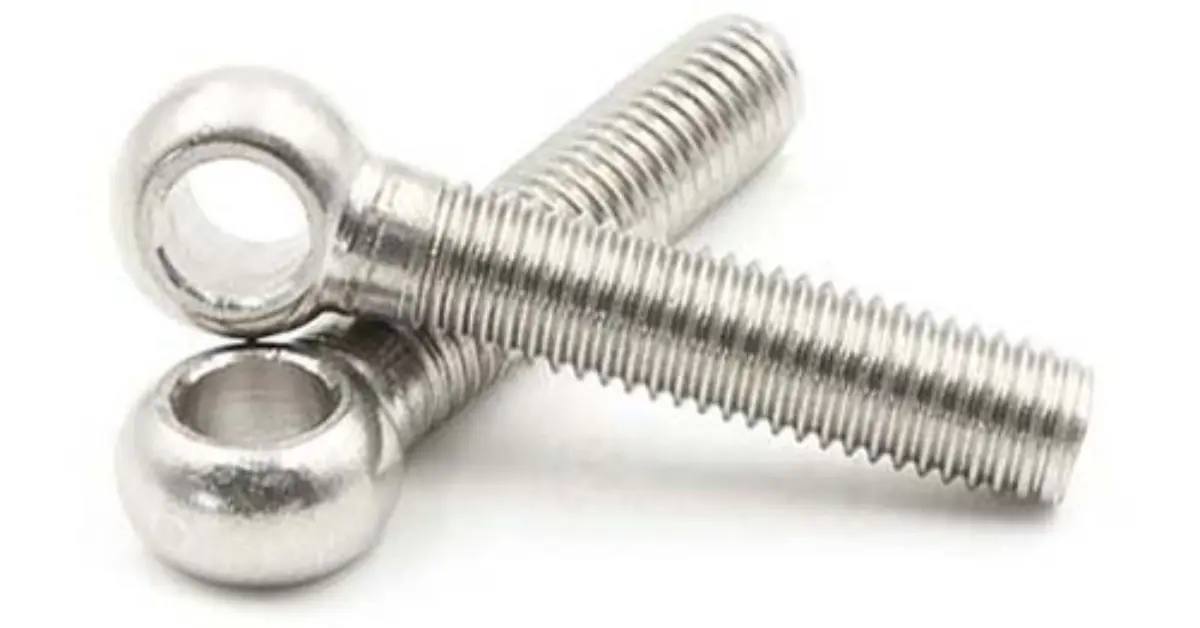Eye bolts are among the most commonly used fasteners in various industries, from construction to rigging applications. These bolts come with a looped head designed to secure cables, ropes, or chains for lifting, anchoring, or tensioning. Understanding the different eye bolt types is crucial to ensuring safety, efficiency, and durability in operations.
In this detailed guide, we will explore the different eye bolt types, their uses, materials, and installation techniques to help you choose the right one for your specific needs.
What Are Eye Bolts?
Eye bolts are fasteners with a threaded shank and a looped head. They are designed to secure loads or provide an anchor point for lifting operations. These bolts are widely used in rigging, construction, marine, and industrial applications. The eye bolt screw is available in different materials, such as stainless steel, galvanized steel, and carbon steel, making them suitable for various environments.
Why Are Eye Bolts Important?
- Secure lifting applications: They provide a strong anchor point for hoisting heavy objects.
- Versatile usage: Used in industries like transportation, shipbuilding, and structural applications.
- Durability and strength: Manufactured with high-grade materials to withstand tough conditions.
- Compliance with standards: Many eye bolt standard specifications ensure safe usage.
Different Eye Bolt Types
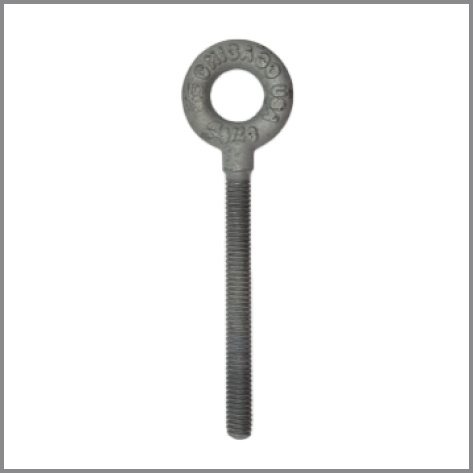
Regular (Plain) Pattern Nut Eye Bolt
A regular nut eye bolt is affixed to its load by tightening a nut from the shaft end; this means that there must be relatively easy access from both sides. They can be shoulder or regular (plain) pattern and either forged or formed-and-bent. Nut eye bolts have extended shanks and approximately half the shank is threaded. Nut eye bolts are typically HDG (Hot Dip Galv) finish carbon steel, and are also available in SS (Stainless Steel). Nut eye bolts are typically UNC thread.
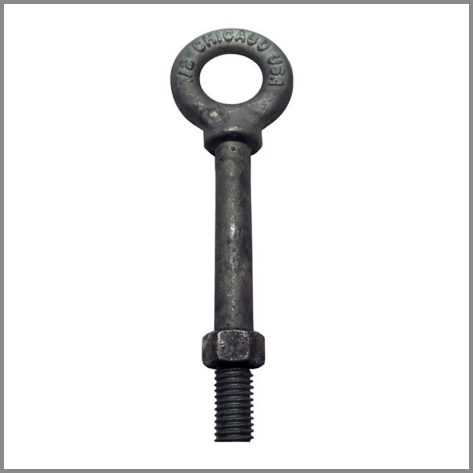
Usually, with forged eye bolts, the bolt has a skirt or shoulder below the loop to improve its capacity to distribute the load.

Machinery Eye Bolt
These eye bolts are usually forged, shoulder pattern and the fully threaded shank connects into threaded or tapped holes designed as lifting points on equipment. They’re available in plain steel, zinc-plated steel, galvanized steel, and stainless steel. The threads are typically UNC or metric. Machinery eye bolts have an oversized eye (relative to nut eye bolts).
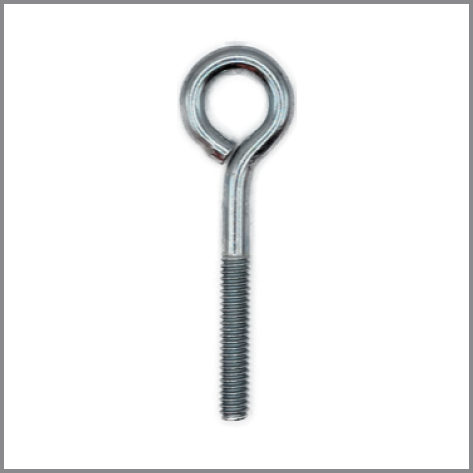
Bent-Formed Eye Bolt
These eye bolts are usually forged, shoulder pattern and the fully threaded shank connects into threaded or tapped holes designed as lifting points on equipment. They’re available in plain steel, zinc-plated steel, galvanized steel, and stainless steel. The threads are typically UNC or metric. Machinery eye bolts have an oversized eye (relative to nut eye bolts).
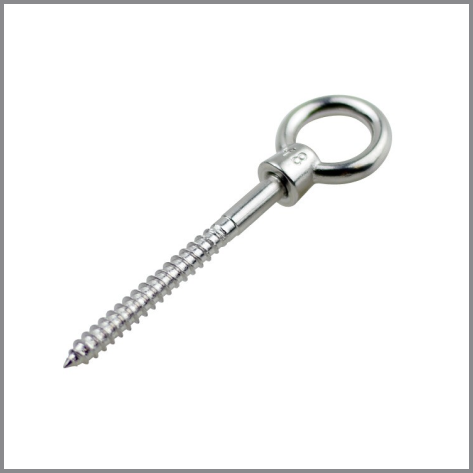
Lag Eye Bolt
The shank of these eye bolts ends in a screw, specifically for attaching an eye bolt to wood or a lag anchor. They are generally not rated with a working load limit as their strength depends on the type and condition of the wood they are attached to. Short lag eye bolts are called Screw Eye Bolts.
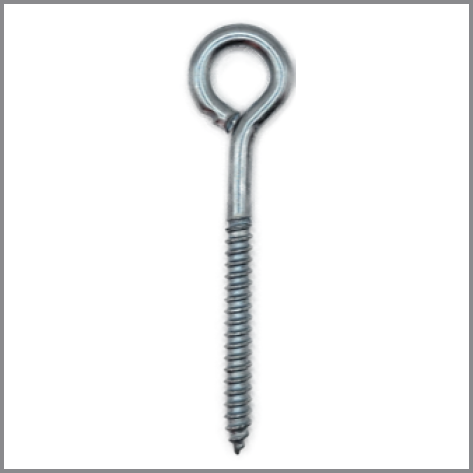
Screw Eye Bolt
These are often formed-and-bent eye bolts for lighter applications. The bolt shank tapers to a screw, allowing it to be affixed to architecture.

Military Spec MS51937
These are domestic machinery eye bolts that are approved for use by all departments and agencies of the Department of Defense. They are made of forged carbon steel and either cadmium plated or uncoated, with diameters dependent on procurement details.
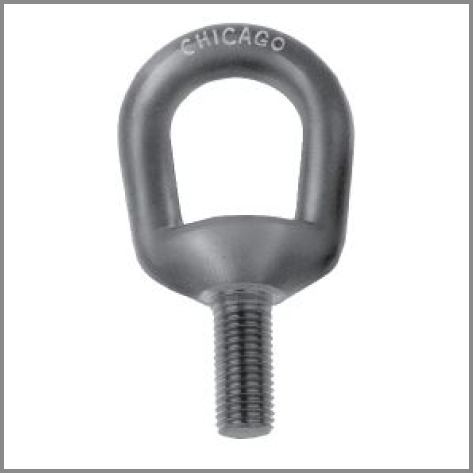
Lifting Eyes
Drop forged from C-1035 steel, heat treated. Available blank or threaded. Self-colored finish is standard; hot galvanized or other finishes supplied on a special basis. Used in lifting applications where larger eyes are required. When ordering prefix stock number with letter “B” (blank) or “T” (threaded) as required. Loads are based on a safety factor of 5 to 1. Working loading limits for lifting eyes are based on a straight vertical lift in a gradually increasing manner, and should never be used for angular lifts.
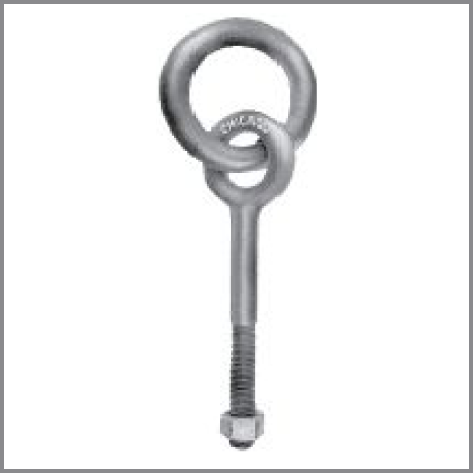
Eye Bolts with Rings Secured
Ring Bolts are Welded and NOT TO BE USED FOR LIFTING APPLICATIONS.These drop forged ring eye bolts are designed to be attached to a cable assembly via the ring end or the threaded end.
How to Choose the Right Eye Bolt
Selecting the right eye bolt types depends on several factors, including load requirements, installation environment, and material compatibility. Here’s what to consider:
1. Load Capacity
Different eye bolts are used for various weight loads. Check the manufacturer’s specifications to ensure the bolt can handle the intended weight.
2. Installation Surface
Consider the material where the eye bolt screw will be installed. Wood-based applications require lag eye bolts, while metal or concrete structures need standard threaded eye bolts.
3. Environment
For outdoor or marine environments, stainless steel eye bolts are the best option due to their corrosion resistance.
4. Application Type
If the load will be applied at an angle, a shoulder eye bolt is necessary. For straight vertical loads, a plain eye bolt will suffice.
Installation and Safety Tips for Eye Bolts
To ensure safe and efficient usage of eye bolts, follow these guidelines:
- Use the right bolt for the job: Select the correct eye bolt types based on the load and application.
- Inspect before use: Check for any signs of wear, rust, or deformation.
- Ensure proper installation: Always screw the eye bolt screw fully into the surface to avoid instability.
- Avoid side loading: If the bolt is not designed for angular loads, it may break or fail under pressure.
- Follow the manufacturer’s recommendations: Ensure compliance with eye bolt standard guidelines.
Where to Buy Quality Eye Bolts?
If you’re looking for high-quality eye bolt types, consider sourcing them from reliable fasteners manufacturers or bolt manufacturers in India. These manufacturers ensure that their products meet industry standard requirements, providing durability and reliability in various applications.
You can check out Tejdeep Steels, a trusted name in the industry, offering a wide range of fasteners, including high-strength eye bolts tailored for different industrial needs.
Conclusion
Understanding the different eye bolt types is essential for ensuring safe and efficient operations in lifting, rigging, and anchoring tasks. Whether you need a shoulder eye bolt for angular loads or a plain eye bolt for straightforward applications, choosing the right bolt enhances performance and safety.
By following eye bolt standard guidelines, selecting the appropriate threaded bolt, and ensuring proper installation, you can achieve optimal results in various lifting and securing applications. If you’re in need of high-quality eye bolts, don’t hesitate to reach out to reliable fasteners manufacturers or bolt manufacturers in India, like Tejdeep Steels, for premium-grade products.
FAQs for Types of Eye Bolts
1. What are the main types of eye bolts?
– The main eye bolt types include shoulder eye bolts, plain eye bolts, lag eye bolts, swivel eye bolts, and forged eye bolts.
2. How do I know which eye bolt to use?
– Choose an eye bolt screw based on the load requirements, installation surface, and environmental conditions.
3. Can eye bolts be used for overhead lifting?
– Yes, but only if they are designed for lifting applications and meet eye bolt standard requirements.
4. What materials are eye bolts made from?
– Common materials include stainless steel, galvanized steel, and carbon steel.
5. Where can I buy quality eye bolts?
– You can purchase high-quality eye bolts from leading fasteners manufacturers like Tejdeep Steels and bolt manufacturers in India.
By considering all these factors, you can confidently select the best eye bolt types for your needs!

